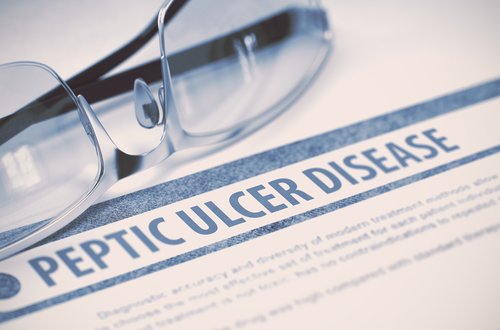Researchers from Taiwan found that patients with fibromyalgia are 1.4 times more susceptible to developing peptic ulcer disease (PUD) than those without the disease.
The finding were recently published in the journal Plos One in a study titled “Association between fibromyalgia syndrome and peptic ulcer disease development.”
About 50 percent of patients with fibromyalgia also have secondary illnesses, such as gastrointestinal disorders. Previous studies have associated fibromyalgia pain with specific foods or even small intestinal bacterial outgrowth. Although the underling mechanism that associating fibromyalgia with gastrointestinal disorders is still unclear, some researchers believe that they can have the same drivers.
Ulcers are often caused by a bacterium called Helicobacter pylori. Consumption of nonsteroidal anti-inflammatory drugs (NSAIDs) has also been linked to the development of ulcers.
Researchers performed a nationwide study based on Taiwan’s National Health Insurance program to evaluate the association between fibromyalgia and the development of peptic ulcer disease. A total of 26,068 fibromyalgia patients and 104,269 controls were included in the study.
Fibromyalgia patients showed a higher incidence of secondary diseases such as diabetes, liver cirrhosis, hypertension, depression, and gastroesophageal reflux disease than the control group. NSAID use was also reported to be more higher in the fibromyalgia group than in the control group.
The authors found a higher incidence of peptic ulcer disease in fibromyalgia patients — a 1.4-fold higher risk of PUD compared with the control group. Also, patients older than 50 were reported to have a 1.6-fold higher risk of developing peptic ulcer disease than younger people with fibromyalgia. Presence of secondary diseases was also associated with increased risk of PUD.
Patients undergoing fibromyalgia treatment showed 1.6 times increased risk of PUD development compared to 1.5 times of those not receiving treatment. This result was not significantly affected by the type of treatment received, suggesting that the drugs prescribed were not responsible for ulcer occurrence, the authors reported.
“In this study, we demonstrated that [fibromyalgia] contributes to an elevated risk of PUD,” the team wrote in its report. “Fibromyalgia patients had a high prevalence of comorbidities, and the drugs identified that relieve psychosomatic symptoms in [fibromyalgia] did not increase the likelihood of ulcers.”
More studies are needed to identify possible causes of the increased incidence of peptic ulcer disease in fibromyalgia patients.

